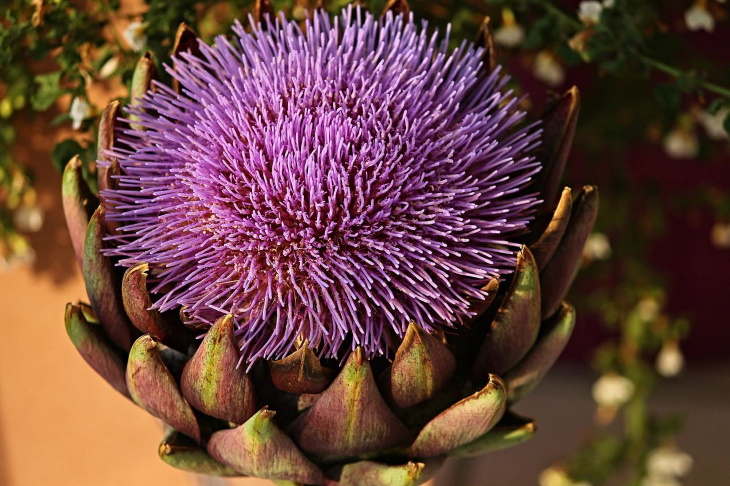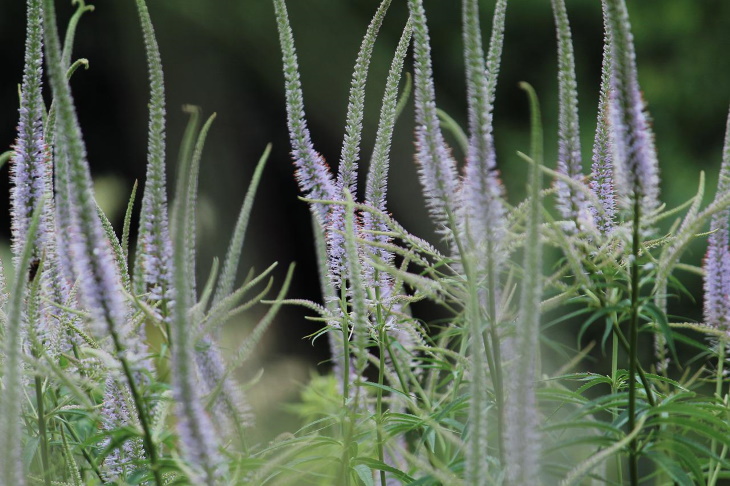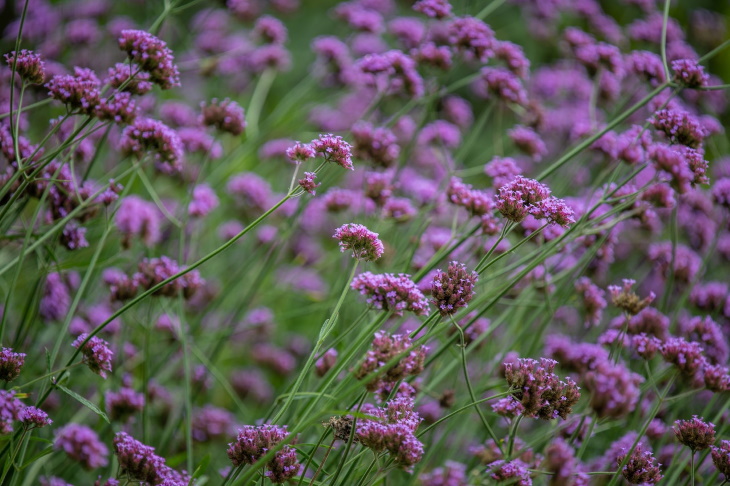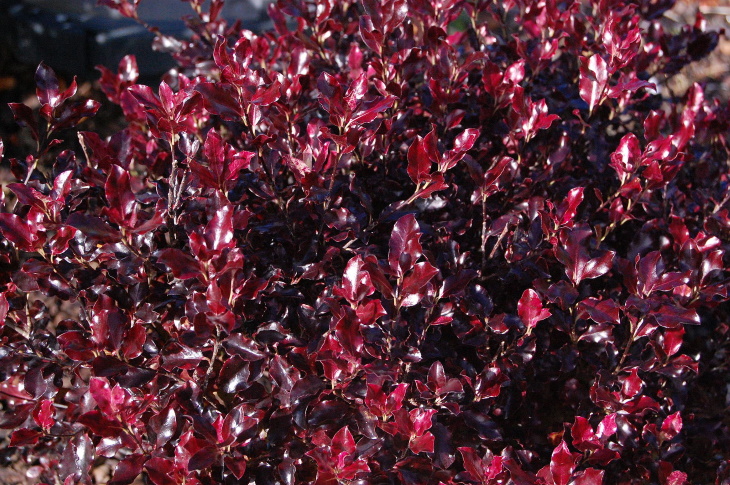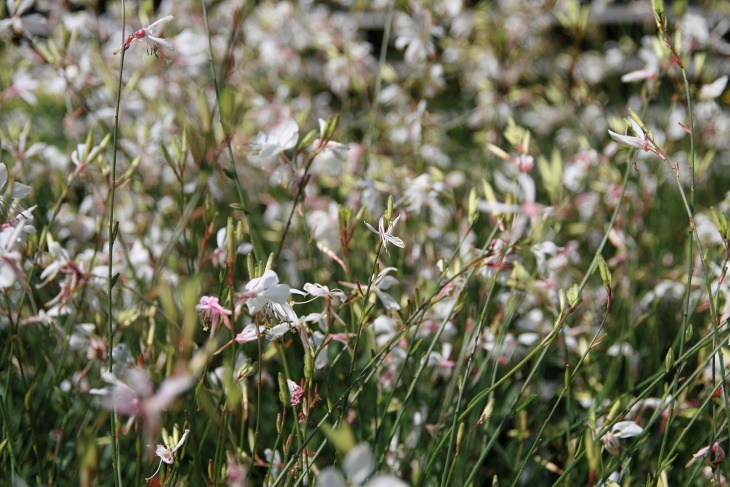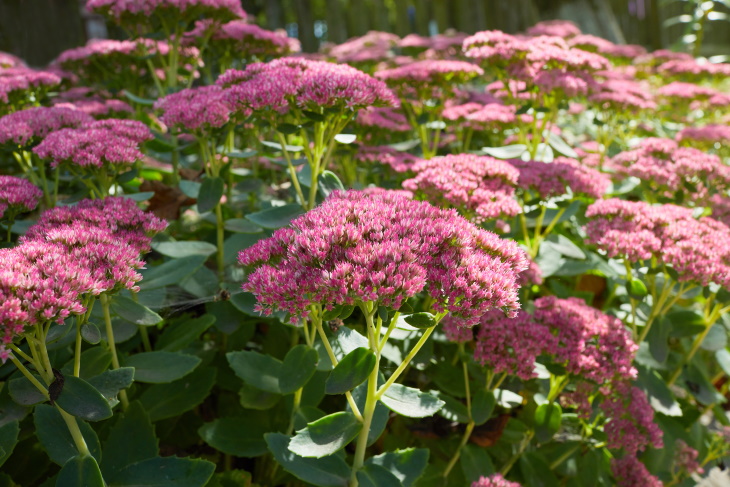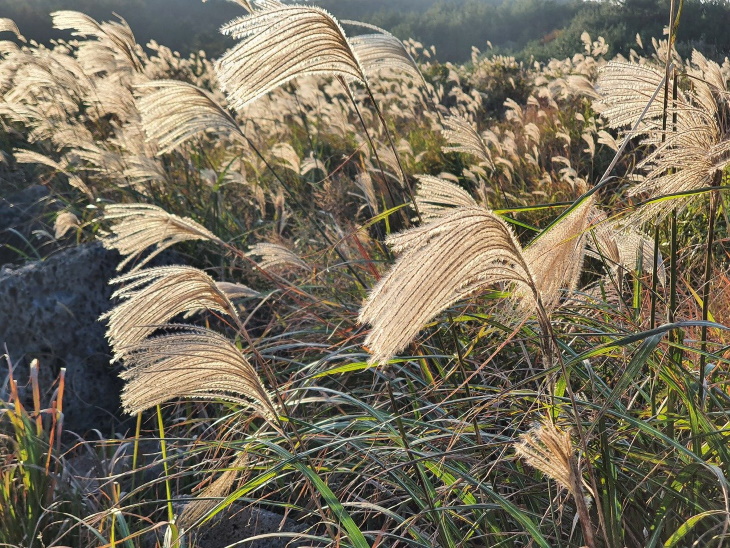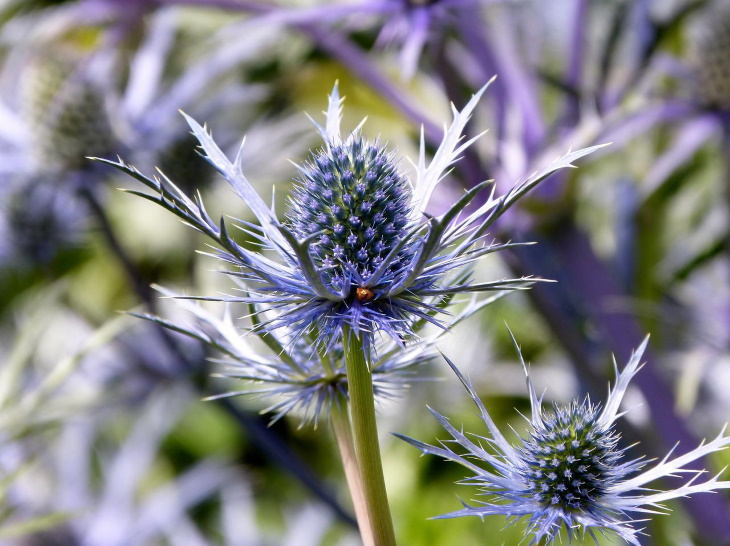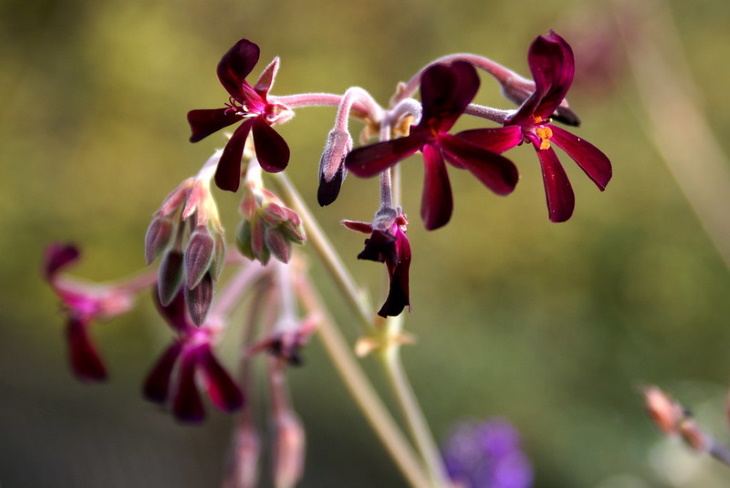
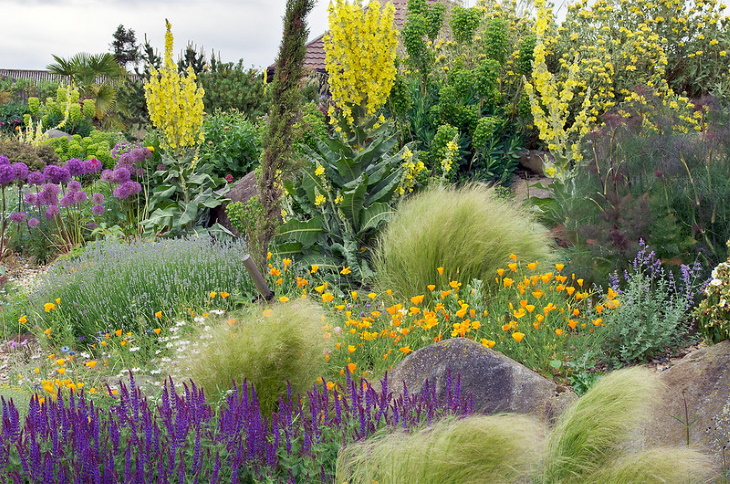
What is, perhaps, a little less apparent is that a waterless garden also requires less weeding and trimming, and the use of fertilizers and pesticides is dramatically lower too.
Naturally, this makes a dry garden more economical and sustainable than any other. And the natural ‘field of wildflowers’ aesthetic these gardens can have shouldn’t be underestimated either.
Every drought-resistant garden looks different. Like no other, this gardening approach takes your climate into account. Therefore, your garden can look like a field of wildflowers, a rock garden with succulents and decorative grasses, or a very Mediterranean gravel garden depending on where you live and what aesthetic you’re going for.
Below, we outline the primary principles of planning a dry garden and provide several beautiful plant recommendations at the end.
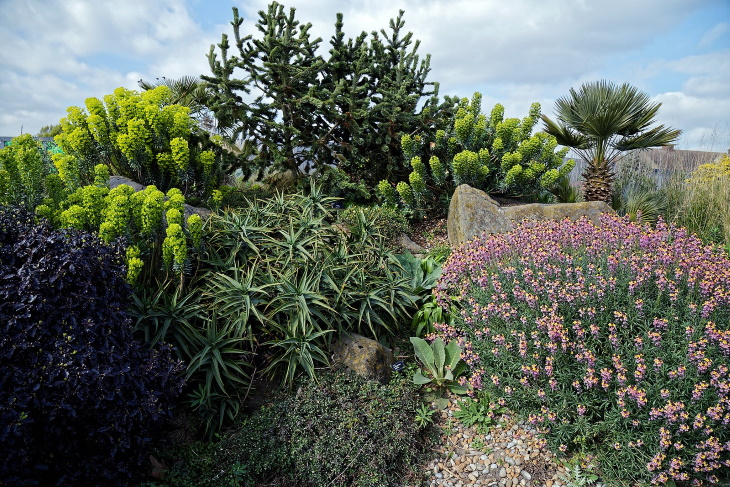
Knowing the climate in your area and your specific piece of land is key to a successful waterless garden. If you’re not sure what plants are hardy in your area, this official USDA hardiness zones map is a good place to start. Once you learn the growing zone in your location, you’ll be able to pick and choose the best plants for you.
Also, keep in mind the sun conditions in your garden - are you getting southern or western exposure?
How much rain do you usually get in the area?
What type of soil do you have - loamy, sandy, or chalky?
The answers to these questions will help you build the ultimate plant palette for your garden.
Whenever possible, work with the natural conditions in your garden instead of augmenting the soil. The only exception to that rule concerns areas in the garden where water collects and stays. This may sound counterintuitive, but the soil needs to be free-draining to support a waterless garden. Therefore, areas that are too moist must be augmented with a draining material, such as gravel or sand.
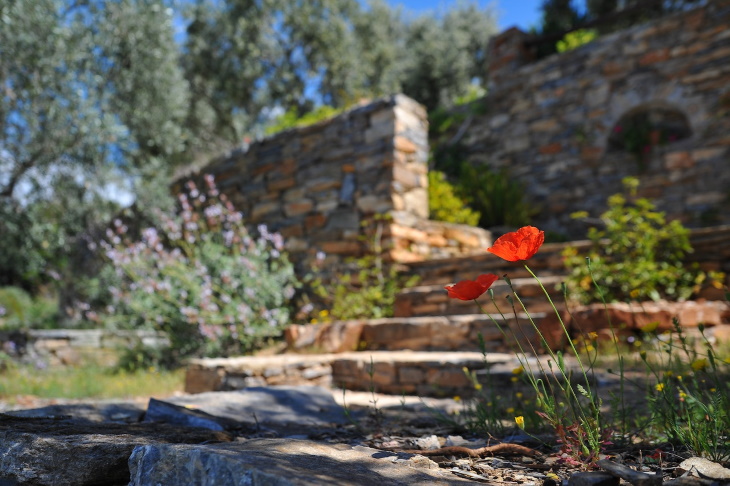
So, let’s assume you’ve established that your garden is south-facing. Before you assume that this means that all your plants get full sun, take some time to really examine the light conditions in your garden in the morning, at noon, and in the evening. Walk around the garden at different times of the day and try to see if any areas of the garden get partial shade from trees or surrounding structures.
If you were to plant sun-loving plants in a shaded area, they will die regardless of the southern exposure overall. And vice versa - you may be able to pull off growing a sun-loving plant in a north-facing garden with lots of open space.
Aesthetics play a big role here too. “You should also observe where the light falls across the garden, as it can help you to decide where you plant certain plants such as grasses, which look fabulous backlit by the sun,” said garden designer Sue Townsend to Homes and Gardens.
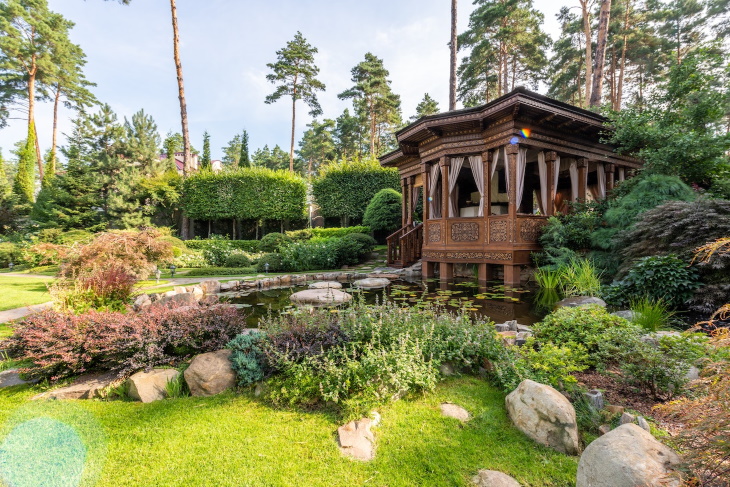
Consider downsizing the lawn area. A traditional grass lawn is the part of your yard that requires the most water, so we’d advise that you cut down the area of the lawn to a bare minimum if you want to make your garden more low-maintenance.
To begin, identify high-traffic areas which require more maintenance or look patchy, and work from there. And remember - reducing lawn size can be done in a clever and aesthetic way, with no bare patches in your garden. Just think of traditional Japanese gardens with their rock gardens and gravel paths, and they’re considered one of the most beautiful gardens in the world!
In place of the lawn use stone terraces, gravel or brick paths, wooden patios, or even manmade ponds and fountains to add visual interest and texture to your garden. Plants that naturally grow in rocky areas will further complement your rock garden and give it a pop of color. These are usually sun-loving plants like succulents, decorative grasses, sedums, and even herbs like rosemary and Spanish lavender.
Alternatively, you can replace the lawn with a combination of groundcover plants, like creeping thyme or lamb's-ear, and taller, dense perennials, shrubs, and ornamental grasses.
Related Article: Spend Less Time on Lawn Care and Maintenance - 7 Best Tips
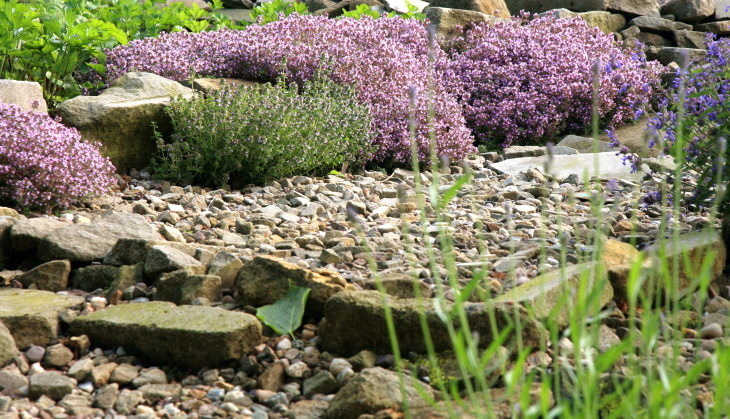
Using local, naturally sourced materials is the best option - both for your wallet and the environment - as this will allow you to cut manufacturing and shipping costs. To improve the drainage of the soil, you can use any type of loose stone, gravel, sand, or crushed concrete. The same materials can be used for mulching and lining pathways. A balance of plants and stone is a beautiful feature present in many traditional dry gardens - be it the Mediterranean or the Japanese garden.
Top the surrounding area of the plant with gravel as a mulch. This has several uses. First of all, it “locks moisture into the soil below in summer,” says garden designer Jane Gates. At the same time, gravel will help keep any moisture away from the plant itself while also protecting your garden from weeds. In the wintertime, the gravel will also lock warmth in the soil, allowing your plants to survive in the cold. Hence, using some kind of well-draining mulching agent is extremely important.
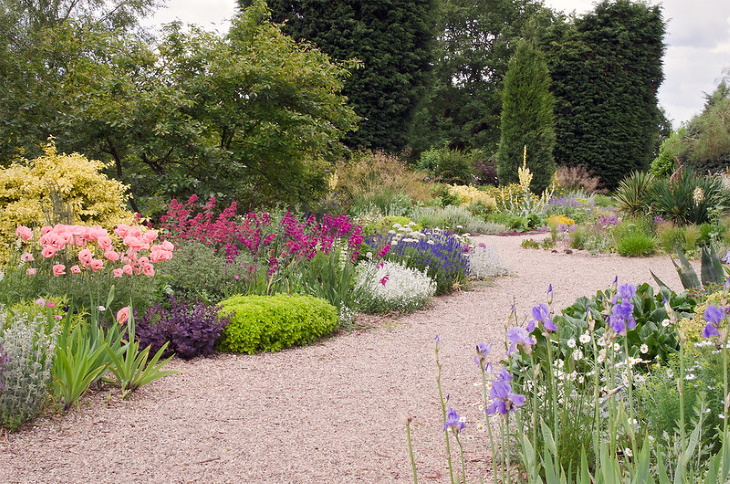
Wish to reduce watering as much as possible? The best way to do that is by encouraging root growth. The logic is simple: the longer the roots, the better the plants are at absorbing moisture from deep beneath the surface of the soil. To achieve this, plant them small. Young plants are in their active growing phase, which gives them a better chance to develop a long and healthy root system.
Before planting a new little plant, prepare the site by breaking up and aerating the soil. This will make it easier for roots to spread. While your plant is getting established, give it deep but occasional watering, as this further promotes root development.
The choice of plants is central to a successful drought-tolerant garden, as is the way you choose to care for them. Dry garden experts recommend deep watering while the plant is getting established. Once established, start watering sparingly and without enriching the soil.
As for combining plants, choosing species that naturally grow alongside each other in dry, hot climates is always a safe bet. Repeating similar colors and textures throughout the garden will help guide the eye and give your garden a more cohesive appearance.
Now onto our favorite plant recommendations (finally) to consider - all of them mix and match very well:
